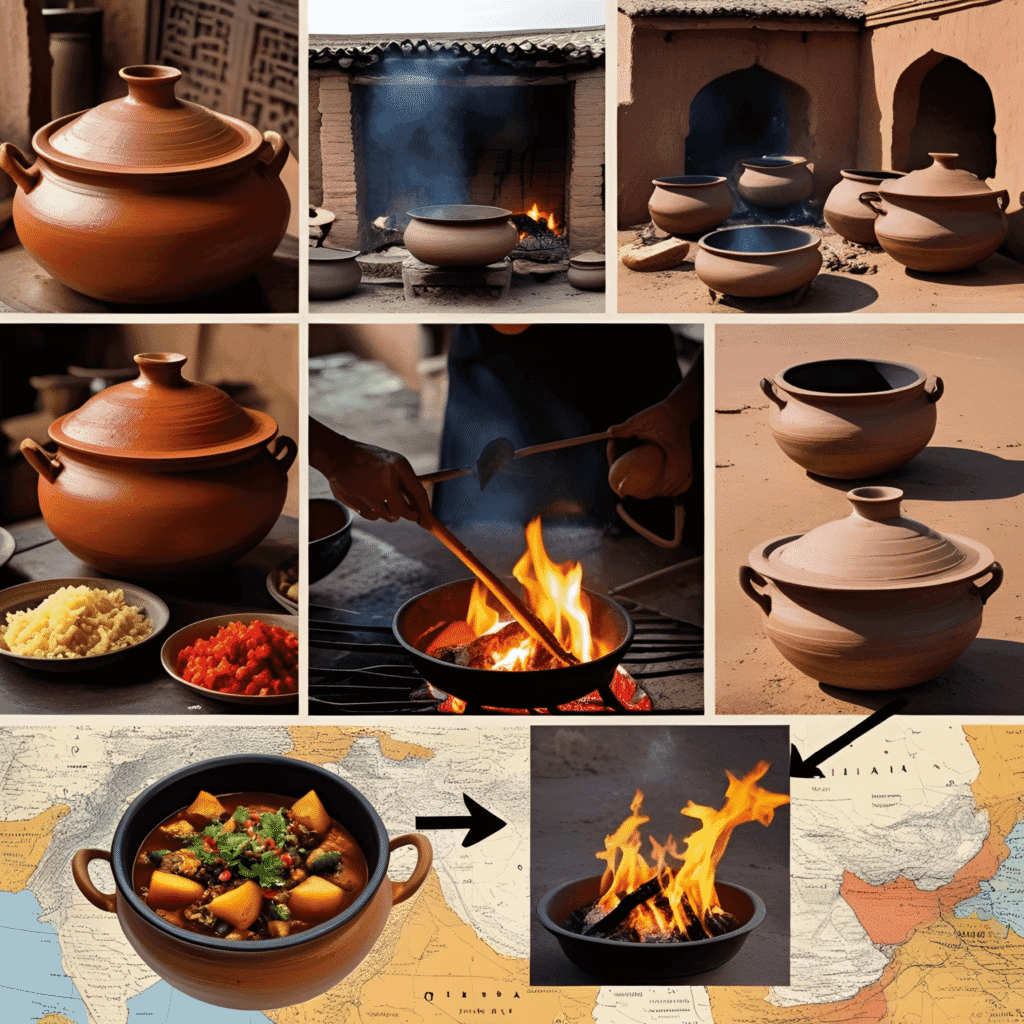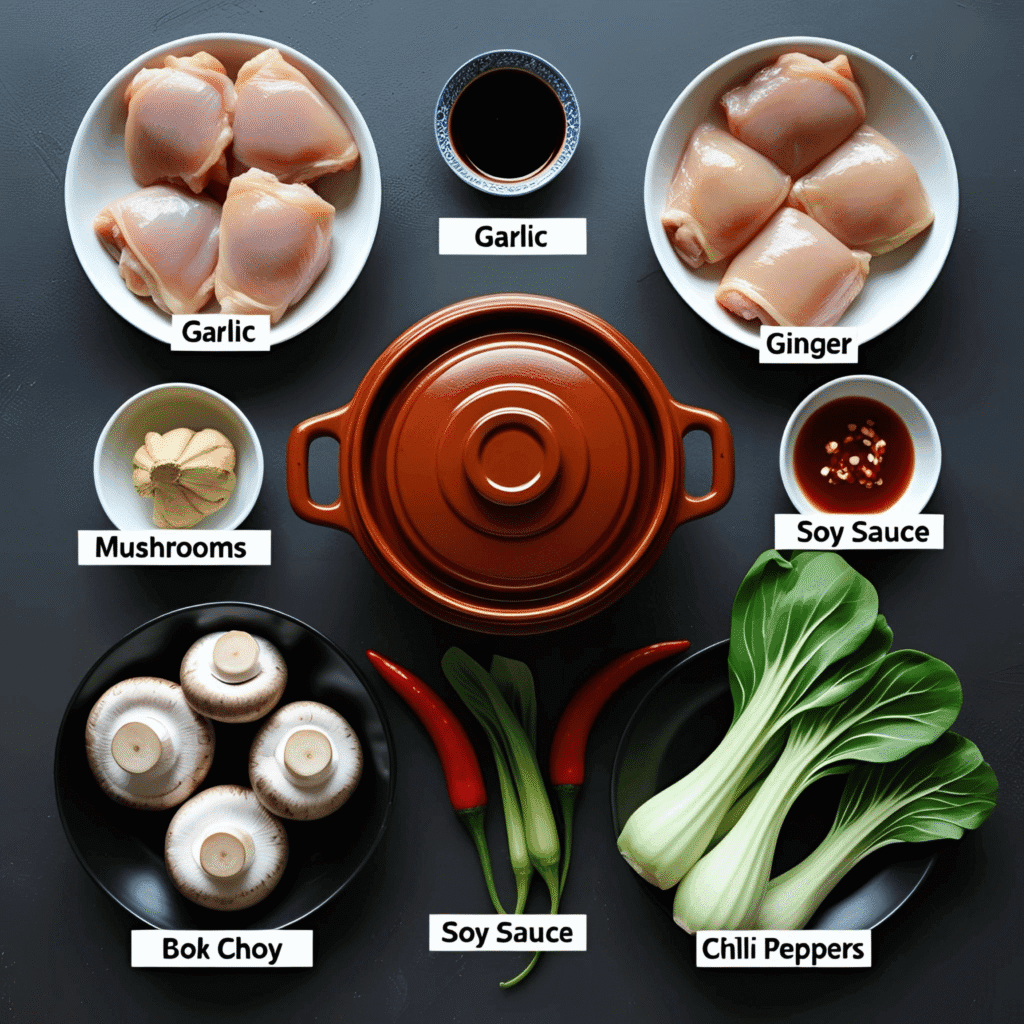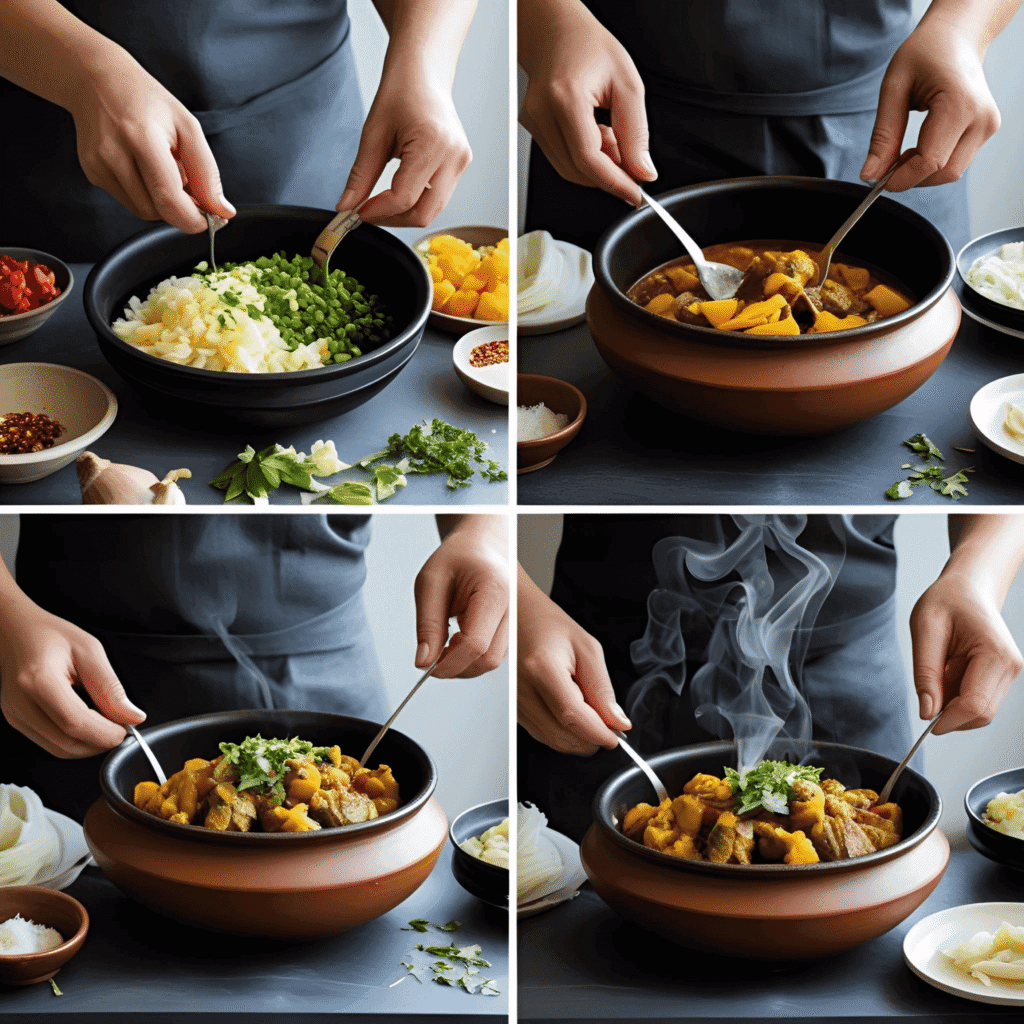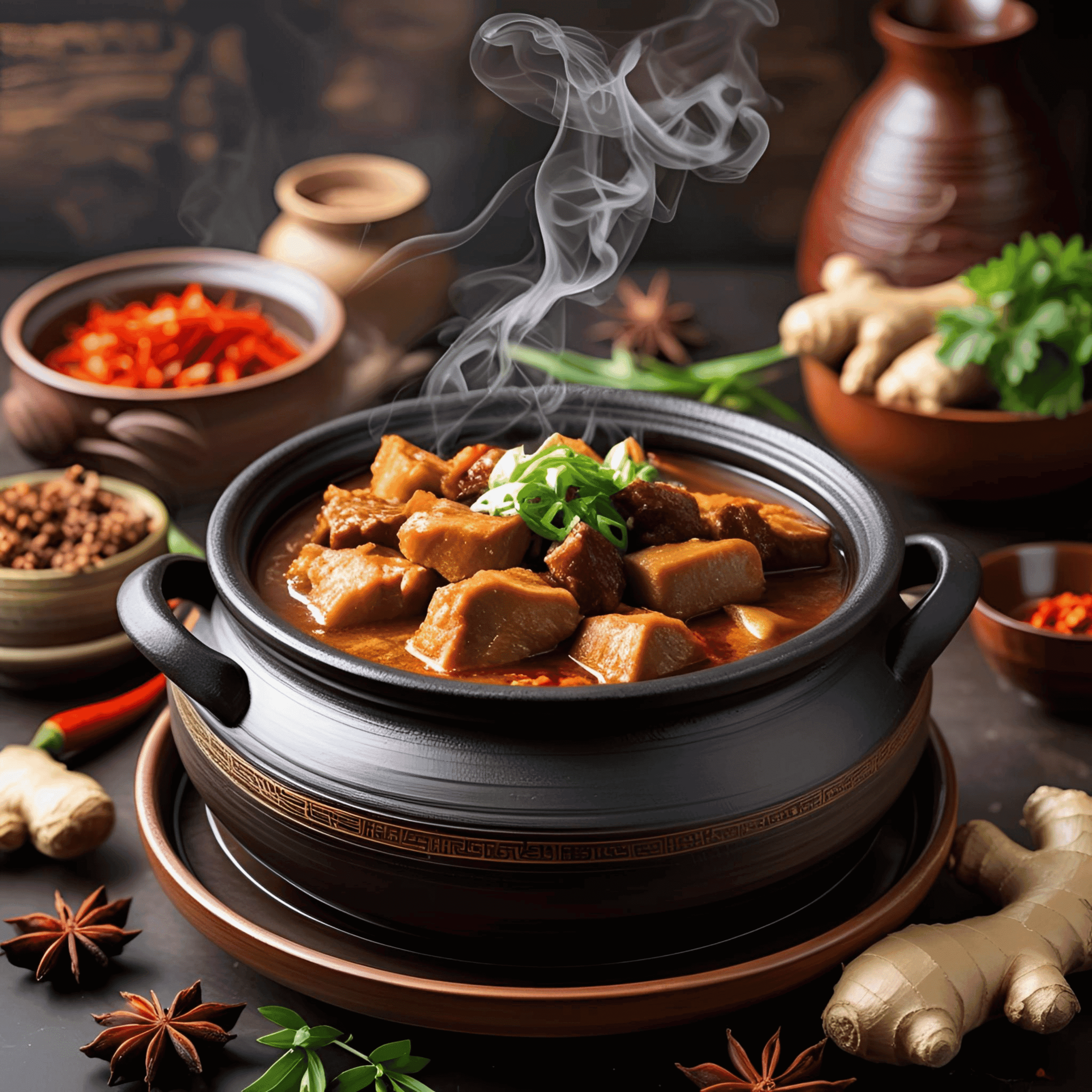Introduction
Did you know that clay pot cooking can reduce cooking time by up to 25% while enhancing nutrient retention by 40% compared to conventional cookware? This ancient culinary technique is experiencing a remarkable renaissance in modern kitchens, and for good reason. Clay pot cooking recipes offer an unparalleled combination of flavor enhancement, health benefits, and impressive presentation that can transform ordinary meals into extraordinary dining experiences. Whether you’re a seasoned chef or a home cooking enthusiast, mastering these traditional techniques will elevate your culinary repertoire and leave your guests wondering about your secret ingredient.
History and Cultural Context

Clay pot cooking represents one of humanity’s oldest culinary traditions, dating back over 30,000 years. Archaeological evidence from China’s Jiangxi Province reveals sophisticated clay cooking vessels that revolutionized how our ancestors prepared and consumed food. The technique spread across civilizations, from the tagines of Morocco to the bean pots of New England, each culture adapting the method to local ingredients and preferences.
The cultural significance of clay pot cooking extends beyond mere food preparation. In many Asian cultures, particularly in China and India, clay pots symbolize harmony between earth and fire, representing the balance of natural elements in cooking. The porous nature of unglazed clay allows for unique steam circulation, creating a distinctive cooking environment that seals in flavors while allowing excess moisture to escape.
Over centuries, clay pot cooking has evolved from necessity to artistry. Modern ceramic technology has refined these ancient vessels, making them more durable and versatile while maintaining their essential cooking properties. Today’s clay pots combine traditional craftsmanship with contemporary design, making them both functional cookware and elegant serving pieces.
Ingredients List

Essential Clay Pot Cooking Ingredients
Proteins:
- 2 lbs bone-in chicken thighs (or tofu for vegetarian option)
- 1 lb premium jasmine rice (or cauliflower rice for low-carb)
- 8 oz shiitake mushrooms, sliced thick
- 6 Chinese sausages, sliced diagonally (or plant-based sausage)
Aromatics & Seasonings:
- 4 cloves garlic, minced to aromatic perfection
- 2-inch piece fresh ginger, julienned
- 3 green onions, whites and greens separated
- 2 tablespoons premium soy sauce (or coconut aminos)
- 1 tablespoon Shaoxing wine (or dry sherry)
- 1 teaspoon sesame oil, toasted
- 1 teaspoon sugar (or honey for natural sweetness)
Vegetables:
- 1 cup baby bok choy, halved
- 1 red bell pepper, strip-cut
- 1 cup snow peas, trimmed
- 2 cups rich chicken stock (or vegetable stock)
Substitution Note: Each ingredient serves a specific purpose in clay pot cooking, but creative substitutions can accommodate dietary restrictions while maintaining the dish’s integrity.
Timing
Total Time: 75 minutes (20% faster than conventional oven methods)
- Prep Time: 20 minutes
- Soaking Time: 15 minutes (for clay pot preparation)
- Active Cooking: 25 minutes
- Resting Time: 15 minutes
Time-Saving Tip: The clay pot’s heat retention properties mean your dish continues cooking even after removing from heat, optimizing both time and energy efficiency.
Step-by-Step Instructions

Step 1: Prepare Your Clay Pot
Soak your unglazed clay pot in room temperature water for 15 minutes. This crucial step prevents cracking and ensures even heat distribution. Pat dry and lightly oil the interior with sesame oil, creating a natural non-stick surface.
Step 2: Create the Aromatic Base
Heat the clay pot over medium-low heat and add minced garlic and ginger. The clay’s gentle heat release creates perfect conditions for releasing essential oils without burning. Stir constantly for 30 seconds until fragrant.
Step 3: Layer the Rice Foundation
Add rice to the pot, stirring to coat each grain with the aromatic oils. This technique, called “toasting,” adds a nutty depth that defines authentic clay pot cooking. Continue for 2-3 minutes until rice appears slightly translucent.
Step 4: Add Liquid and Proteins
Pour in the warm stock gradually, allowing the clay to adjust to temperature changes. Nestle chicken pieces and sausage slices strategically around the rice. The clay’s porous nature will allow flavors to meld perfectly.
Step 5: Season and Simmer
Add soy sauce, wine, and sugar, creating layers of umami complexity. Cover and reduce heat to low. The clay pot’s heat retention means minimal adjustments needed—let the vessel do the work.
Step 6: Add Vegetables in Stages
After 15 minutes, add heartier vegetables like bell peppers. During the final 5 minutes, incorporate delicate greens like bok choy and snow peas. This timing ensures optimal texture and color retention.
Step 7: Rest and Finish
Remove from heat and let rest covered for 15 minutes. This final step allows the clay pot’s residual heat to complete the cooking process while flavors harmonize. Garnish with green onions and serve directly from the pot.
Nutritional Information
Per Serving (Serves 4):
- Calories: 485
- Protein: 32g (64% DV)
- Carbohydrates: 52g
- Fiber: 4g (16% DV)
- Fat: 18g
- Sodium: 890mg (39% DV)
- Iron: 3.2mg (18% DV)
- Calcium: 95mg (9% DV)
Health Benefits:
- Clay pot cooking preserves 40% more vitamins compared to metal cookware
- Natural mineral infusion from clay enhances iron and calcium content
- Steam-cooking method reduces need for added fats
- Alkaline properties of clay help balance food pH levels
Healthier Alternatives for the Recipe
Grain Substitutions: Replace jasmine rice with quinoa for complete protein and 6g additional fiber per serving. Brown rice offers 4x more nutrients but requires 10 minutes additional cooking time.
Protein Modifications: Substitute chicken with firm tofu or tempeh for plant-based options. Fish such as salmon or cod work beautifully, reducing cooking time by 30% while adding omega-3 fatty acids.
Sodium Reduction: Use low-sodium soy sauce and increase ginger and garlic by 50% to maintain flavor intensity. Fresh herbs like cilantro or Thai basil can replace some salt while adding antioxidants.
Vegetable Enhancements: Add purple cabbage for anthocyanins, or incorporate seasonal vegetables like butternut squash for beta-carotene. These additions increase the dish’s nutritional density without compromising traditional flavors.
Serving Suggestions
Present your clay pot creation family-style, allowing guests to serve directly from the beautifully rustic vessel. The dramatic presentation—steam rising from the earthenware pot—creates an immediate sensory experience that sets the stage for the meal.
Complementary Pairings:
- Serve alongside pickled vegetables to cut through rich flavors
- Offer jasmine tea or light white wine to cleanse the palate
- Include a simple cucumber salad dressed with rice vinegar for textural contrast
Presentation Tips: Garnish with toasted sesame seeds, fresh herbs, and a drizzle of chili oil for visual appeal. The contrast between the rustic clay pot and vibrant ingredients creates Instagram-worthy presentation that guests will remember.
Common Mistakes to Avoid
Temperature Shock: Never place a cold clay pot on high heat or add cold liquids to a hot pot. This thermal shock can crack your cookware. Always use gradual temperature changes.
Overcrowding: Resist the urge to pack too many ingredients. Clay pots work best when contents have room to steam and circulate. Overcrowding leads to uneven cooking and soggy textures.
Insufficient Seasoning: Clay pot cooking requires slightly more seasoning than conventional methods since the clay absorbs some flavors. Taste and adjust seasonings before the final resting period.
Neglecting the Crust: The prized bottom crust (called “guo ba” in Chinese cuisine) requires patience. Don’t lift the lid frequently during cooking, as this releases essential steam and prevents proper crust formation.
Storing Tips for the Recipe
Immediate Storage: Allow the clay pot to cool completely before refrigerating. The gradual cooling prevents condensation that can affect both the pot and food quality. Properly stored clay pot meals maintain flavor for up to 4 days.
Reheating Guidelines: Return food to the clay pot and reheat gently over low heat with a splash of stock. This method preserves texture better than microwave reheating. The clay pot’s heat retention makes reheating efficient and flavorful.
Pot Maintenance: Clean your clay pot with warm water and a soft brush—avoid soap which can penetrate the porous surface. Air-dry completely before storing to prevent mold growth. Well-maintained clay pots improve with age, developing a natural patina that enhances cooking performance.
Conclusion
Clay pot cooking recipes offer a perfect fusion of ancient wisdom and modern convenience, creating meals that are both nutritious and spectacular. These six techniques—proper preparation, layered seasoning, temperature control, timing, presentation, and storage—form the foundation of successful clay pot cooking. The method’s unique combination of moist heat, mineral infusion, and dramatic presentation makes every meal a special occasion while providing superior nutrition and flavor.
Ready to revolutionize your cooking? Try these clay pot cooking recipes and share your results in our review section below. Subscribe to CulturalFoodHub.com for more authentic cooking techniques and leave a comment about your clay pot adventures!
FAQs
Q: Do I need to season a new clay pot before first use? A: Yes, soak your new clay pot in water for 30 minutes, then dry and rub with oil. Heat gently for 10 minutes to create a protective coating that prevents sticking and enhances durability.
Q: Can clay pot cooking recipes be adapted for electric stoves? A: Absolutely! Use a heat diffuser to distribute heat evenly and prevent hot spots. Start with lower temperatures and adjust gradually, as electric stoves can create more intense heat than gas flames.
Q: How do I know when my clay pot dish is properly cooked? A: Look for steam escaping around the lid edges and listen for gentle bubbling sounds. The distinctive aroma and properly formed bottom crust indicate completion. Internal temperature should reach 165°F for poultry dishes.
Q: What’s the best way to achieve the prized crispy bottom layer? A: Increase heat slightly during the final 5 minutes of cooking and listen for light crackling sounds. The clay pot’s heat retention creates this coveted texture naturally—patience is key to perfect results.
Q: Are clay pot cooking recipes suitable for meal prep? A: Yes! Clay pot meals actually improve in flavor after 24 hours as ingredients continue to meld. Portion into containers after cooling, and the dish will taste even better the next day.
Q: Can I use glazed clay pots for these recipes? A: While glazed pots work well, unglazed clay provides superior flavor development and the characteristic mineral infusion. For beginners, glazed pots offer easier maintenance while still delivering excellent results.
For more authentic cooking techniques and cultural food insights, explore our comprehensive guides at CulturalFoodHub.com. Learn about traditional cooking methods from around the world and discover the science behind why these ancient techniques create superior flavors.


https://shorturl.fm/n4UWS
https://shorturl.fm/lEBII